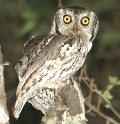- By Pat Leonard
- Around Town
 Print
Print  Photo by Marshall IliffA new national record has been set for the highest number of bird species identified in a 24-hour period—it happened during a midnight to midnight birding blowout across eastern and southern Texas on April 22. The six members of Team Sapsucker from the Cornell Lab of Ornithology identified 264 species by sight or sound, topping the previous record of 261. The feat also raised nearly $200,000 dollars for Cornell Lab bird conservation programs. Supporters pledged a set amount for every species the team found.
Photo by Marshall IliffA new national record has been set for the highest number of bird species identified in a 24-hour period—it happened during a midnight to midnight birding blowout across eastern and southern Texas on April 22. The six members of Team Sapsucker from the Cornell Lab of Ornithology identified 264 species by sight or sound, topping the previous record of 261. The feat also raised nearly $200,000 dollars for Cornell Lab bird conservation programs. Supporters pledged a set amount for every species the team found. At the stroke of midnight the tally began in San Antonio with a Yellow-crowned Night-Heron, quickly followed by a Mallard and a Barred Owl. Fueled by endless numbers of peanut butter and jelly sandwiches, the Sapsuckers roamed the state, searching for resident Texas birds along with newly-arriving migrants and species not yet flown to more northerly breeding grounds. The bird that put the Sapsuckers over the top was the Clapper Rail, bird number 262, heard in coastal Rockport at dusk. It was followed by the Virginia Rail and then the final bird of the day, a churring Black Rail at Cape Valero.
“Diversity of habitat equals a great diversity of birds,” said team captain Chris Wood. “You have desert, scrub, forest, marsh, and coastal habitats, all of which make for some of the best birding in the country. We had such a blast!”
“We had an incredible amount of help from Texas birders,” said team member Jessie Barry. “I would say there are at least 100 people who helped us locate key species during the week of scouting we did ahead of our run. We’re grateful for all the help on the ground and for all the support from those who pledged or donated.”
There’s more competitive birding just around the corner as the Cornell Lab’s student team, the Redheads (named for the Cornell “Big Red” sports teams) return to the World Series of Birding on May 14, in New Jersey. The Redheads compete in the Cape May County division and have won the title there for the past two years. Donations from supporters help fund Cornell undergraduate research related to birds. Over the past 25 years, Cornell Lab birding teams have raised more than $2.7 million for bird conservation.
v7i16



